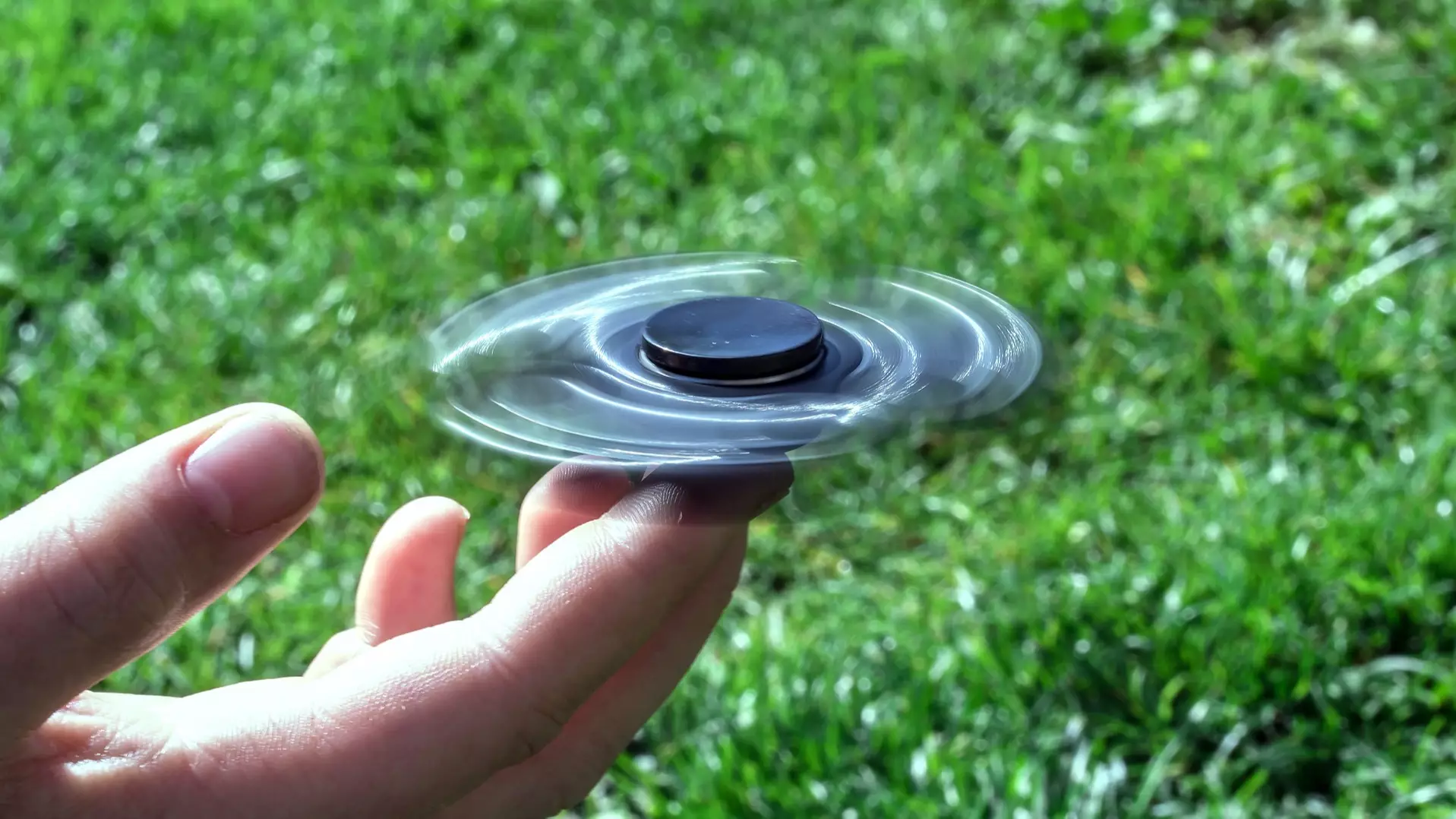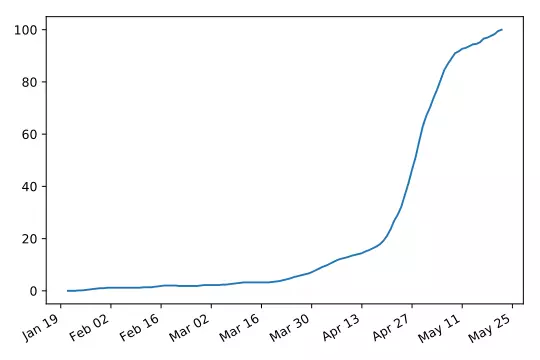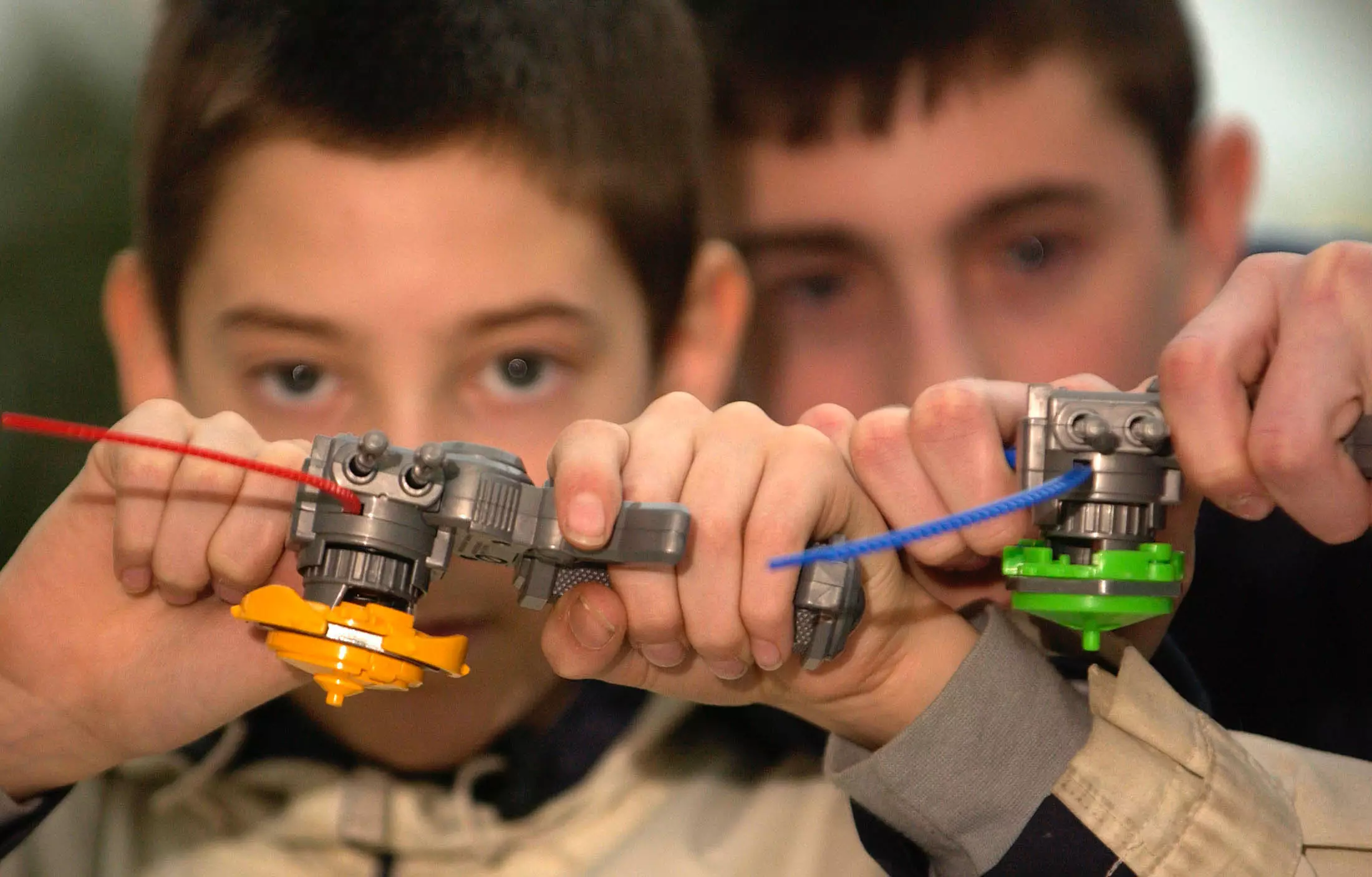
Unless you've been hiding under a rock, or waiting until the threat of nuclear war is resolved, then you must know what a fidget spinner is. They are everywhere. Vendors sell them on the streets for a fiver and stores apparently can't keep up with demand.
The Almar Sales Company sold an impressive 20 million spinners to American retailers like Walmart in April alone, according to the New York Post.
The firm also claimed that the toy could become the largest selling item in its 50-year history.
Advert
But where the hell did it come from?

Credit: PA
Unfortunately, that is still a bit of a mystery.
Advert
Catherine Hettinger, who trained as a chemical engineer, has been quoted by some news organisations as the inventor of the toy, and she filed a patent application for a spinning toy as far back at 1993.
Hettinger has told different stories as to what inspired her, from seeing children throwing rocks at police in Israel, to helping her with a medical condition which causes muscle weakness.
Her patent, which ended in 2005, included a device made of soft plastic, with a dome and a skirt. She allegedly pitched it to several toy manufacturers but they weren't interested.
According to Bloomberg, Hettinger began making the toy in her laundry room and sold them at art fairs. But her story has been called into question by two patent lawyers, who claim that her toy and the one that has exploded in popularity, are nothing alike.
Advert
Another man stepped into the ring, Scott McCoskery, to claim he had invented the spinner.
He told NPR last month, that he developed the concept in 2014 to cope with his own fidgeting issues. Scott began selling his product online and called it the Torqbar.

Credit: Torqbar
Advert
His toy only has two prongs, which is obviously different to the ones with three blades. He was initially selling these bad boys for anywhere between $300 and $500 (£232-£387). Three years later, he still sells them - and they haven't dropped much in price. When they launched last year, their site crashed five times in the first 45 minutes, but they managed to sell more than a thousand pieces.
As Scott filed his patent last year, others began making their own spinners from metal, plastic and some even used 3D printers.
But why is it only now that we're seeing them everywhere?
Forbes published an article late last year, claiming that fidget spinners were the 'must have toy of 2017'. The author claims: "A few of us noticed we got up from our desks less, dumping energy into fidgeting with the spinner rather than taking mindless trips to the pantry."
Advert
Several months later, people began posting videos of them doing spinner tricks. Time magazine says that Google searches for 'fidget spinner' spiked in April and there are several versions clambering for the top spot in Amazon's best sellers list at the moment.

Google Search popularity of fidget spinners in early 2017. Credit: Wikipedia
Some parents claim that the toys are dangerous. One girl from Texas allegedly swallowed a part of the toy and needed surgery, while an Australian mum says her son nearly lost his eye while trying to show his mates some spinner tricks.
They've been banned from some schools because teachers claim they are a distraction.

Credit: Facebook/Kelly Rose Joniec
But while some schools think they're nothing but a shit fad, other are embracing the toy.
Elaine Taylor-Klaus is the co-founder of Impact ADHD and told CNN: "For some people [with ADHD], there's a need for constant stimulation.
"What a fidget allows some people - not all people - with ADHD to do is to focus their attention on what they want to focus on, because there's sort of a background motion that's occupying that need."
The toys are also being heralded for their ability to tackle stress and anxiety.
Another toy that has also erupted with popularity is the fidget cube. It's the 10th highest funded Kickstarter project in history with nearly $6.5 million (£5 million) raised, thanks to more than 150,000 backers.
It has pretty much anything that a fidgeter needs with a rolling ball, a joystick, spinning disc, rubbing pad, and buttons.

Kids these days have an absolute wealth of toys that can keep them busy. But how does the fidget spinner or fidget cube stack up against some of the toys that defined my generation?
Tamagotchis
Tamagotchis is one of the most memorable toys of the late 90s. I remember that the majority of conversations on the playground at that time was whether or not your pet was still alive.
Surprisingly, the toy earned the creator, Aki Maita, a Noble Prize for economics. As of 2009, there have been 44 versions of Tamagotchis since they were released in 1996. It was so big that they made a movie about the pets (seriously) which was released in 2007.
Tamagotchis were also criticised for being a distraction at school because kids were bloody obsessed with making sure their pet survived until lunch time.
Beyblades
Beyblades were also THE toy to have when they were released in 2000. The toys were based off the popular TV show of the same name. But they didn't explode into kid's bedrooms until Hasbro launched the toys internationally in 2002 and kids would battle each other with their blades.
There were four types, attacker, defender, survivor and balance, and there were specific rules of battle. If you were an expert you would have picked up the extra powerful launcher, carrying cases and launch sights.

Credit: PA
Any type of playing card
Whether it was Pokemon, Yu-Gi-Oh! or football player cards, kids were absolutely obsessed with these things. The serious kids had their cards encased in special folders or they were laminated to protect them from their mates' greasy fingers.
But some took it to another level. In 2000, 42 Pokemon trainers from the US, Japan, France, Italy, Canada, Spain, Germany, the Netherlands, and the UK gathered in Honolulu. The competitors, who were all 14 and under, could only get an invite if they won district and regional competitions.
As of 2011, 25 billion Yu-Gi-Oh! cards had been sold since they were released in 1999. It holds the Guinness World Record for the top selling trading card game and continues to be popular today.
Pogs
It's believed that the game behind Pogs was created in Hawaii in the 1920s or 30s, but it's also similar to a milk cap game seen in Japan since the 17th century.
In 1991, teacher Blossom Galbiso taught her students about a game she learned as a young girl.
It spread like wildfire and a Canadian producer of milk caps began sending millions to the rest of America. The Canada Games Company reintroduced them under the Pog brand and the fad was born.
Yo-yos
These toys are incredibly old - like 2,500 years old. They underwent a revival in the 1920s, but it wasn't until the 60s, 70s and 80s until they became a part of mainstream culture.
There are some high-level yo-yo competitions these days where people show off their tricks and to be honest some of them are actually fairly impressive. A man by the name of Shinji Saito is considered the best in the world. He's an eleven-time world champion and is double handed.
I got dizzy just watching those tricks. It would be
pretty cool to have 'Professional yo-yo-er' on your resume.
Let us know if there were any other toys or games that defined your childhood.
Featured Image Credit: Pixabay